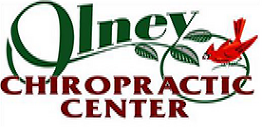
SERVING OLNEY, MD AND THE SURROUNDING COMMUNITIES |


Applied kinesiology, from the Greek roots "kinesis" (movement) and "logos" (study), literally means "the study of movement". Like other healing and diagnostic methods, it is both a science and an art.
First discovered by Dr. George Goodheart in the 1960s, this technique is used to evaluate body functions by the use of simple muscle testing. During a physical examination, some muscles will test as "strong" while other opposing muscles may test as "weak."
A chiropractor skilled in the techniques of applied kinesiology realizes that this muscle "weakness" found during testing may indicate much more than simple muscle function - it may also be connected to the function of various organs, issues of nutrition, imbalances with the body's acupuncture meridian system, or problems with the body's vascular systems and lymphatic drainage.
A brief history of applied kinesiology
Applied kinesiology views the body as a system
Healing arts such as chiropractic and applied kinesiology do not view the body as being composed of separate, independent organs or systems. Rather, both understand that all parts of the body are intimately connected to other parts and systems. An imbalance in one area of the body will naturally tend to cause imbalances in other systems, as the body attempts to maintain balance and health, and
often leads to additional imbalances as the body attempts to compensate.
As an illustration of this, consider muscle imbalances. A muscle imbalance will cause structural strain within the body, resulting in muscle spasms, joint pain, a tendency towards injury, and even systemic health issues. This structural stress can affect the nervous system and every organ and system within the body.
Many body structures or systems can have more than one function. As an example, muscles allow for the movement of the bones of the body, but they also hold the skeletal system in place through a dynamic tension of forces, something like guy wires in a bridge or architectural structure.
Our skeletal structure is held in place by this system of dynamic tension between opposing muscle groups. When this balance of tension is disturbed, and one muscle exerts more force than its opposing muscle, the skeletal structures will become imbalanced, and can lead to a cascade effect of imbalance in other bodily systems, resulting in spasms, pain, weakness, or even illness in other parts of the body.
Treating both the symptoms and causes of illness
A practitioner of applied kinesiology uses this diagnostic science to determine the root causes of illness or injury in the body. By carefully evaluating the pattern of muscle strengths and weaknesses, it is possible to "troubleshoot" and isolate the underlying issues leading to disease, not unlike an electrician attempting to isolate a "short" in a complex electrical system, to determine the cause or causes of the malfunction.
Instead of merely treating the muscle group that is in spasm or causing pain, viewing this as the only problem to be addressed, a chiropractor who is skilled in the use of applied kinesiology will use this technique to determine the underlying problems that lead to pain or spasms, working with the body's nervous system, acupuncture meridians, nutrition, and lymphatic and vascular systems.
Chiropractic treatment, using applied kinesiology, is a holistic healing approach designed to treat the entire patient and to get to the root causes of health problems.
If you would like more information about the benefits of applied kinesiology and chiropractic, or to schedule your appointment, call Olney Chiropractic Center today at 301-774-0081.
Applied Kinesiology - the art and science of muscle testing



